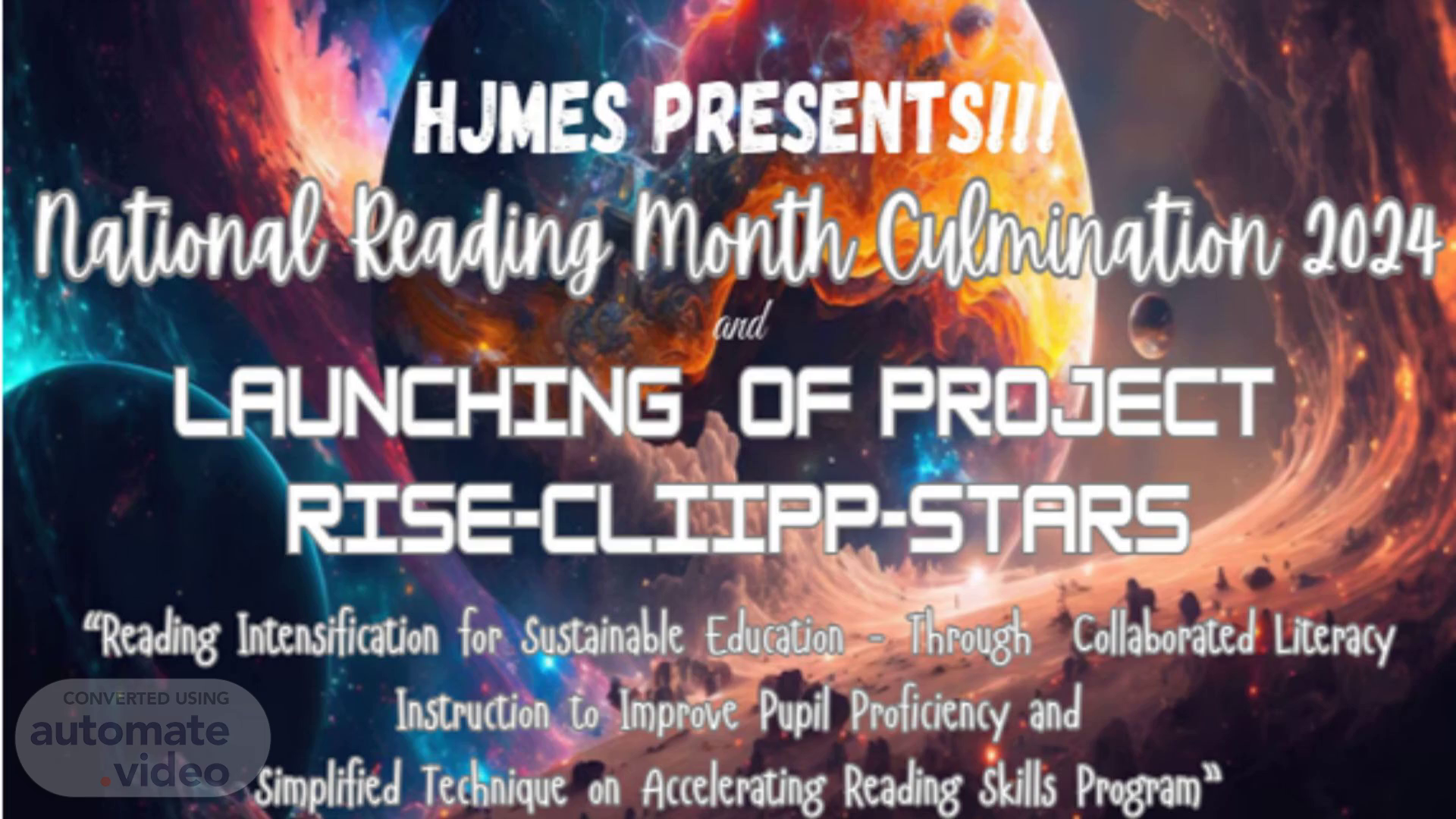Scene 1 (0s)
[Audio] "Good day, everyone! Welcome to the presentation of our literacy development initiative. This program is designed to address the pressing challenges in reading among learners in the early grades. Let us work together to ensure every child achieves their full potential.".
Scene 2 (15s)
[Audio] "The slide shows the objectives of our project. Our primary aim is to reduce the number of low-emerging learners in Grades 1 to 3 by 75%. The accompanying images of children reading and writing reflect our goal of empowering learners through collaborative efforts, social-emotional learning frameworks, and research-based literacy approaches. This also emphasizes fostering a genuine love for reading tailored to learners' needs.".
Scene 3 (45s)
[Audio] "The implementation cycle is rooted in the Big Six Framework, which focuses on Oral Language, Phonological Awareness, Phonics, Vocabulary, Fluency, and Comprehension. This comprehensive approach ensures a well-rounded literacy development for our learners.".
Scene 4 (1m 5s)
[Audio] "This slide identifies our target audience and stakeholders. The target learners include those in Grades 1 to 3 at the low-emerging level and Grades 4 to 6 in the frustration level..
Scene 5 (1m 17s)
[Audio] These stakeholders include internal participants like teachers and reading coordinators, as well as external partners such as parents and the PTA, ensuring a shared responsibility.".
Scene 6 (1m 35s)
[Audio] "This slide highlights the implementation cycle of the program. The images illustrate a step-by-step process, starting from planning and preparation to execution and monitoring. The visuals depict collaborative activities among stakeholders, such as planning meetings, teacher training sessions, and classroom interventions. These emphasize how each phase—pre-implementation, during implementation, and post-implementation—is interconnected to ensure the program's success. The cycle reflects a continuous process of assessment, action, and improvement to address the needs of low-emerging learners effectively.".
Scene 7 (2m 17s)
[Audio] "This slide introduces the Big Six Framework, which underpins our literacy development approach. Each component—Oral Language, Phonological Awareness, Phonics, Vocabulary, Fluency, and Comprehension—is represented visually with tools and activities that engage learners. The pictures emphasize the practical and interactive nature of this method.".
Scene 8 (2m 42s)
[Audio] "This slide shows examples of oral language activities. The images highlight children naming shapes, colors, and following directional commands. These activities help build foundational language skills by connecting daily experiences with structured learning. Such engaging and relatable tasks make language acquisition enjoyable.".
Scene 9 (3m 6s)
[Audio] "Phonological awareness activities are depicted on this slide. The pictures show learners working on rhyming, syllable recognition, and sound matching. These tools and exercises make identifying sounds and word patterns engaging and effective for young learners.".
Scene 10 (3m 29s)
[Audio] "This slide focuses on phonics. The images illustrate activities like using the Marungko approach and flashcards to teach consonant blends, digraphs, and vowel patterns. These engaging visuals show how decoding skills are built through interactive and systematic teaching methods.".
Scene 11 (3m 49s)
[Audio] "This slide demonstrates vocabulary-building strategies. The pictures include students engaging in picture-based activities, spelling exercises, and oral recitations. These activities develop word recognition and enhance comprehension, enabling learners to expand their language skills.".
Scene 12 (4m 9s)
[Audio] "Fluency-building is the focus here. Images of learners practicing repeated reading, modeled reading, and one-minute oral reading activities emphasize the importance of regular practice in improving reading speed and accuracy. The visuals showcase tools like appropriate texts and teacher-led demonstrations.".
Scene 13 (4m 31s)
[Audio] "This slide illustrates comprehension strategies such as identifying the main idea, noting details, and sequencing events. The pictures include graphic organizers and storybooks, highlighting tools that help students analyze and connect with texts meaningfully.".
Scene 14 (4m 48s)
[Audio] "Pre-implementation activities are highlighted here. The pictures show school planning meetings, SLAC sessions, and parents' orientations..
Scene 15 (4m 58s)
[Audio] These activities emphasize the need for thorough preparation and collaboration among stakeholders before rolling out the program.".
Scene 16 (5m 6s)
[Audio] "This slide focuses on assessments like PHIL-IRI and CRLA. The images show learners engaged in diagnostic reading activities. These assessments help identify reading levels and guide targeted interventions for individual learners.".
Scene 17 (5m 24s)
[Audio] "The Adopt-A-Reader program is featured here. The images depict one-on-one reading sessions, where a mentor supports a struggling reader. This personalized approach builds confidence and fosters progress in learners with significant reading challenges.".
Scene 18 (5m 42s)
[Audio] "This slide shows images of interactive reading classes. Students are engaged in group reading and storytelling activities, highlighting the collaborative and inclusive nature of these sessions. The visuals emphasize the importance of making reading a shared and enjoyable experience.".
Scene 19 (5m 59s)
[Audio] "The partnership between schools and homes is depicted here. Pictures of parents and children reading together reflect how family involvement enhances literacy development. This collaboration ensures that learning continues beyond the classroom.".
Scene 20 (6m 15s)
[Audio] "To conclude, the images on this slide showcase the positive outcomes of the program—students actively engaged in reading, parents collaborating with teachers, and stakeholders celebrating milestones. These pictures represent the shared achievement of fostering a love for reading and building a community of literate and empowered learners. Thank you, and let's continue working together to achieve these goals!".
